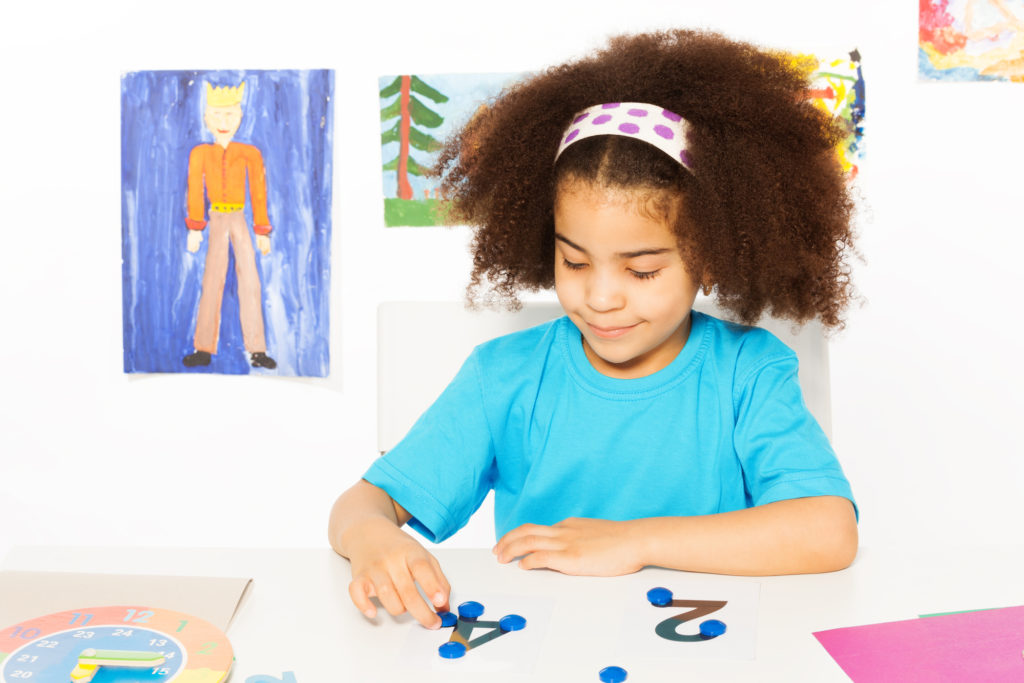Recently, during a discussion at the start of a course that would explore dyslexia and dyscalculia, teachers were asked what they hoped to learn about math. The most common response: how to help students develop better number sense.

I always find teacher questions and comments intriguing, because it gives me insight into their thinking and the challenges they are facing in their classrooms. As someone who primarily focuses on helping students better understand math, this one caught my attention.
So what is number sense? Most of us generally think of it as having a good understanding of the size of numbers and being fairly accurate with our estimation and answers to math problems. But the problem with this definition is that it really describes an observable behavior or outcome, but not necessarily what is happening beneath it.
I’d like to propose a new definition of number sense: the ability to conjure up a reasonably accurate mental image of a given quantity.
Research in cognitive neuroscience has shown that we are born with the innate ability to subitize, or to just “see” and “know” quantities up to 4 without counting. This perceptual subitizing ability allows us to then conceptually subitize, which is the ability to identify larger numbers by breaking them into smaller subitizable groups. We also know from research that if these items are in canonical arrangements, like dice patterns, then the ability to quickly subitize is improved and extended.
Research also shows that Working Memory – which is whatever our minds are thinking about and processing at the current moment – has two primary components: the visuospatial sketchpad, and the phonological loop. These components can be compared to watching a movie – there is a visual image as well as language that is narrating the story. Our minds are similar: for whatever we are thinking about, we hold a picture or mental image in mind, and we narrate it with language, both spoken and auditory.
Strong number sense, therefore, requires the ability to conjure up and hold an accurate mental image in mind of the given quantity.
So where is the rub? My experience working at the elementary level is that curriculum tends to focus on counting as the primary number strategy for students to learn. Herein lies the problem: counting does not do much to develop number sense.
Remember that piece about Working Memory? The average, fully-developed adult can hold about 7 digits in mind. Students with learning disabilities, by contrast, may only be able to hold 4 digits, +/-1, and young students possibly even less. That means when students are counting, they are only able to hold the last few digits in their active Working Memory – not enough to develop a meaningful picture of the whole.
Counting is also a linear task – meaning it occurs one piece at a time – and is therefore primarily located in the left hemisphere. Number sense, by contrast, is visual-spatial and requires seeing a picture of the whole – and is therefore primarily located in the right hemisphere. Counting, basically, is identifying the individual components in a number, which means counting is to math as identifying letters – or even letter sounds – is to reading.
Recently a teacher commented to me that they showed students multiple methods for math and let students choose which one they liked best. Again, herein lies the rub: if a student chose to read the work “cat” as “c-a-t” – either saying the letters or vocalizing the individual sounds – would you say that was ok? And hypothetically, if you did – would you be surprised if at the end they didn’t comprehend what they read or get meaning out of the text?
And so it goes with number sense. Comprehending number requires being able to put the pieces together into a meaningful whole. If we want students to have strong number sense, we need to use effective visuals for numbers that students can actually hold in their minds, providing a mental image of the whole quantity. To best support students with this skill, we need to use the arrangements of quantity that research has shown are most easily held and pictured in the mind, which are the canonical dice arrangements.
And that, my friends, is how we improve number sense.
